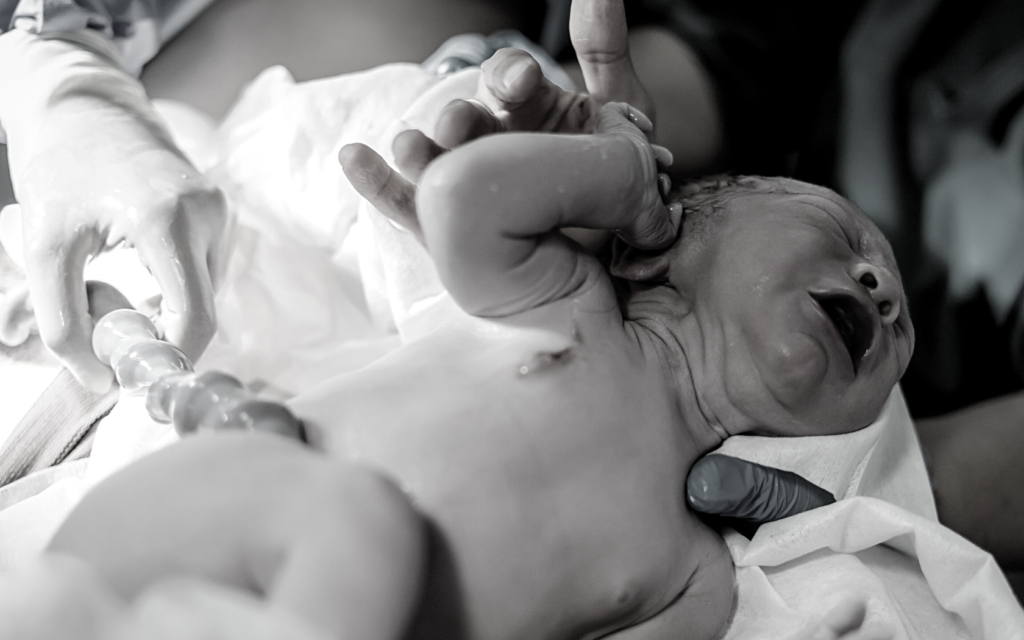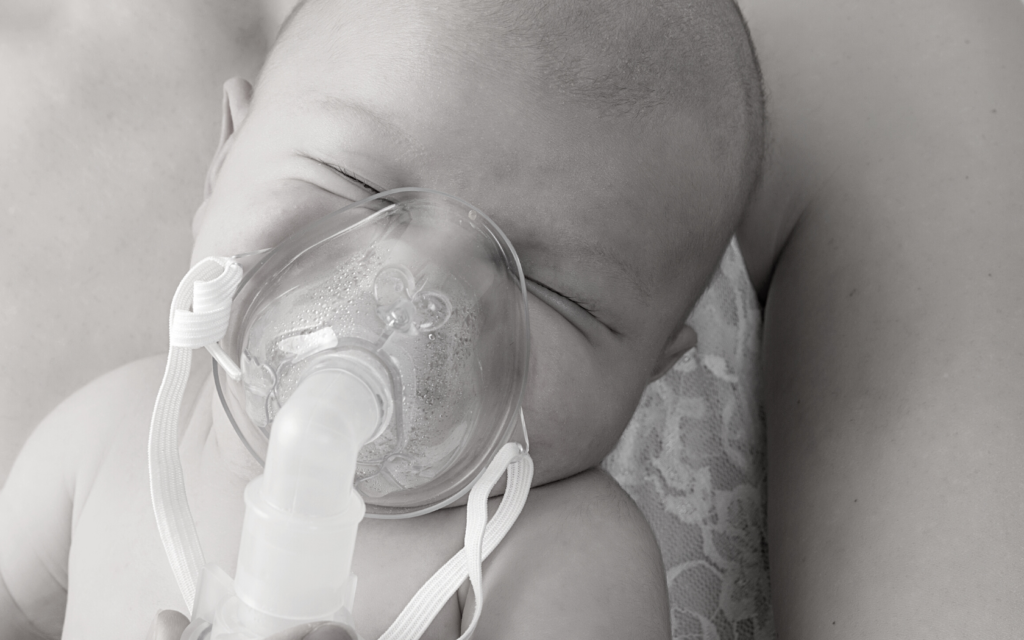The moment has finally arrived. After many hours of strenuous labor, the mother delivers her child. After that, the umbilical cord exits her body as well. That’s the correct order for delivery…but what happens if the cord comes out first? That’s an obstetrical emergency known as a prolapsed cord.
Cord prolapse is somewhat rare. But when it does happen, doctors must be on their toes to prevent it from injuring the baby.

Why Is Umbilical Cord Prolapse Dangerous?
Is it really a big deal for the cord to exit first? Won’t it need to be delivered anyway? Yes, the cord must be delivered—but not first. Umbilical cord prolapse is a serious emergency for the following reasons:
- If the cord moves into the cervical canal first, it’s at risk for compression.
- Compression means the cord could be “squeezed” in a way that blocks blood flow from reaching the baby. As the baby moves through the birth canal, its head or shoulders could press against the cord.
- Less blood flow means less oxygen. A lack of oxygen can cause fetal distress and permanent injuries such as brain damage.
If doctors catch prolapsed cord symptoms on time, they might first try to move the baby away from the cord. If that doesn’t help, they should order a C-section.
An emergency C-section can take the baby out of harm’s way via a surgical removal from the womb. The standard recommendation is to perform a C-section less than 12 minutes from when a baby starts to show signs of distress.
But to make the right decision about performing a C-section, doctors have to be on the lookout for prolapsed cord symptoms. What are these symptoms? Read on to find out.
Prolapsed Cord Causes & Symptoms
The most common cause of a prolapsed cord is when a mother’s water breaks before the baby descends into the birth canal. It can also happen during breech birth, or when delivering multiples. Sometimes excessive amniotic fluid can cause cord prolapse because the strong rush of fluid pushes the cord out.
Cord issues can cause severe injuries or even death. But doctors can prevent it from harming an infant if they take swift action.
They should watch for prolapsed cord symptoms, such as:
- Before labor, the cord is in a position to prolapse. Doctors can observe it via ultrasound or fetal Doppler before labor. That way, they can diagnose the prolapsed cord early and prevent its delivery.
- The baby’s heart rate slows down during labor. This is a sign of fetal distress.
- The cord is visibly leaving the mother.
- The doctor can feel the cord coming out ahead of the baby during delivery.
Birth Injuries From Umbilical Cord Prolapse
Belky Aguilar thought she might have to deliver her baby girl in the car on the way to the hospital. As her husband drove frantically through traffic, the baby’s foot was already emerging.
As they arrived at the nearest hospital, the obstetrics team discovered that Aguilar had a prolapsed cord. The baby’s foot was pressing on it, causing the infant’s heart rate to drop.
But a physician’s assistant’s quick response saved the day. The assistant was able to move the cord away from the baby’s foot and leg. Aguilar continued with a vaginal delivery.
When the baby emerged, she had trouble breathing. She needed intubation and had to move to the neonatal intensive care unit. But here’s the happy ending you were hoping for: the precious newborn soon recovered.
Thankfully, in Aguilar’s case, doctors recognized the symptoms and acted fast. But that doesn’t always happen. And if things go left untreated, there can be major consequences:
- Stillbirth (From a complete lack of oxygen)
- Breathing issues
- Hypoxic Ischemic Encephalopathy: Brain damage stemming from oxygen shortage.
- Cerebral Palsy: a muscle movement disorder.

Prolapsed Cord & Malpractice
Sometimes the injuries above stem from a health care provider’s negligence. For example, the obstetrics team might miss prolapsed cord symptoms or fail to take action when they see them. They might wait too long to order a C-section. If a doctor’s mistake causes fatality or injury, it could constitute malpractice.
Did you experience a prolapsed cord while giving birth? Was your child later diagnosed with a birth injury related to oxygen deprivation? There may be a connection–and you may be entitled to damages.
You may be unsure whether you have legal grounds to sue. This is why our birth injury team at Hampton & King offers free consultations to answer any questions you may have. We also provide representation on a contingency fee basis. This means there’s no charge for our services unless you win. You have nothing to lose, but everything to gain. Get in touch with us here.
Prolapsed Cord FAQs
A healthcare provider (like a midwife or doctor) may gently insert their hand into the vagina to lift the baby’s head to prevent it from compressing the cord. In some situations, they might insert a catheter into the bladder and fill it with fluid. This elevates the baby’s head and decreases pressure on the cord.
Yes, a baby can survive an umbilical cord prolapse, and they usually do. The mortality rate is in the single digits (studies usually report between 3% and 7%), but it is a medical emergency. The survival and health outcomes largely depend on a timely and effective response by your healthcare provider.
The most common causes of umbilical cord prolapse are premature rupture of membranes, abnormal fetal positioning (like breech or transverse lie), multiple pregnancies, and excessive amniotic fluid (polyhydramnios). These conditions increase the likelihood of the cord slipping into the birth canal ahead of the baby.




